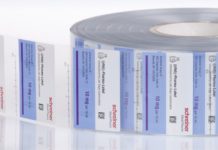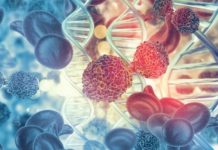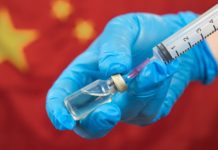- In ENESTfreedom, 51.6% of eligible first-line Tasigna patients maintained TFR for 48 weeks after stopping treatment; study did not meet its statistical primary endpoint, specifically the > 50% lower limit of the 95% confidence interval[1]
- ENESTop met primary endpoint with 57.9% of eligible patients who had switched to Tasigna from Glivec® maintaining TFR for 48 weeks after treatment cessation[2]
- First results from clinical program provide greater understanding of TFR and may help establish appropriate criteria for eligible Ph+ CML patients to stop treatment
- Novartis expresses its deepest gratitude to the patients who participated in these important clinical trials
Novartis announced at the 52nd American Society of Clinical Oncology (ASCO) Annual Meeting, the first results from the Tasigna (nilotinib) Treatment-free Remission (TFR) clinical trial program. These studies evaluated the potential to maintain molecular response (MR) after stopping therapy in adult patients with Philadelphia chromosome-positive (Ph+) chronic myeloid leukemia (CML) in the chronic phase who achieved a sustained deep level of molecular response with Tasigna – a concept called TFR[3]. Findings from two open label trials, ENESTfreedom and ENESTop, showed that more than 50% of Ph+ CML patients who met the rigorous predefined response criteria of the trials were able to maintain TFR after stopping Tasigna both in the first-line setting and after switching from Glivec (imatinib)*[1],[2]. Discussions with regulatory authorities are underway with potential submissions in 2016.
Results from the ENESTfreedom study found that more than half (51.6%) of 190 CML patients (confidence interval [CI] 95%: 44.2%-58.9%) who achieved a sustained deep molecular response following at least three years of first-line treatment with Tasigna were able to discontinue therapy and remain in TFR for 48 weeks[1]. ENESTfreedom did not meet its primary objective, the percentage of patients in major molecular response (MMR; BCR-ABL1 International Scale [IS] <= 0.1%) at 48 weeks in the TFR phase, per the original statistical assumption that the lower limit of the 95% CI will be equal to or greater than 50%[1]. The median treatment duration in this trial was 3.6 years which is a short length of tyrosine kinase inhibitor (TKI) exposure prior to attempting TFR. Of the 86 patients who restarted treatment with Tasigna due to loss of MMR, 98.8% were able to regain MMR (n=85) and 88.4% were able to regain MR4.5 (BCR-ABL1 IS <= 0.0032%; n=76) [1]. By weeks 7.9 and 15.0 of treatment reinitiation with Tasigna, 50% of retreated patients already achieved MMR and MR4.5, respectively1. One patient discontinued the study at 7.1 weeks without regaining MMR after reinitiating treatment with Tasigna[1].
“ENESTfreedom is the first trial to show that, after a short treatment duration with nilotinib of 3.6 years, more than 50 percent of patients who stopped therapy were able to remain treatment-free at 48 weeks,” said Dr. Andreas Hochhaus, Head of the Department of Hematology and Medical Oncology, Jena University Hospital, Germany, and primary investigator for the ENESTfreedom study. “Findings from the nilotinib TFR trials add to the existing body of research exploring the discontinuation of tyrosine kinase inhibitor treatment in CML and may help to establish safe and appropriate criteria for eligible patients to stop treatment[1],[2],[3].”
ENESTop, the second Novartis TFR trial at ASCO, evaluated 126 patients who were able to achieve a sustained deep molecular response with Tasigna, but not with prior Glivec therapy[2]. In this trial, nearly 6 out of 10 (57.9%) patients (95% CI: 48.8%-66.7%) who achieved a sustained deep molecular response following at least three years of Tasigna therapy maintained a molecular response 48 weeks after stopping treatment[2]. The study met its primary endpoint of the proportion of patients without confirmed loss of MR4.0 (BCR-ABL1 IS <= 0.01%) or loss of MMR within 48 weeks of Tasigna discontinuation in the TFR phase[2]. In the study, 51 patients with confirmed loss of MR4.0 or loss of MMR restarted Tasigna[2]. Of these patients, 98.0% (n=50) regained at least MMR, with 94.1% (n=48) and 92.2% (n=47) regaining MR4.0 and MR4.5, respectively[2]. By weeks 12.0 and 13.1 of treatment reinitiation with Tasigna, 50% of retreated patients already achieved MR4.0 and MR4.5, respectively[2]. One patient entered the treatment reinitiation phase but did not regain MMR by 20 weeks and discontinued the study. The BCR-ABL1 for this patient was 62.2% at the start of Tasigna retreatment and 9.8% at study exit[2].
“Novartis has been at the forefront of advancements in the treatment and understanding of CML for 20 years,” said Alessandro Riva, MD, Global Head, Novartis Oncology Development and Medical Affairs. “The exploration of TFR in patients treated with Tasigna, which includes Novartis support of eight TFR studies, is the next step in our commitment to advancing care for patients living with this disease.”
Results from ENESTfreedom were presented today in an oral session (Abstract #7001, 3:12 p.m. CDT) at ASCO in Chicago. Data from ENESTop will be presented in a poster session on June 6 (Abstract #7054, 8:00-11:00 a.m. CDT). Both studies are ongoing, with planned follow-up to evaluate the ability of patients to sustain remission for longer durations following discontinuation of Tasigna. These are the first presentations of data from the Novartis Tasigna TFR clinical trial program.
An important part of the Tasigna TFR studies is regular and frequent molecular monitoring with a well-validated assay able to measure BCR-ABL transcript levels down to MR4.5. Frequent patient monitoring during TFR allows timely determination of loss of MR4.0 and MMR and need for treatment initiation[1],[2].
No new major safety findings were observed in these studies in patients treated with Tasigna beyond those in the known safety profile of Tasigna[1],[2]. In ENESTfreedom, 24.7% of patients experienced musculoskeletal pain during the first year of the TFR phase versus 16.3% while still taking Tasigna in the one-year consolidation phase[1]. In ENESTop, the rates of all grade musculoskeletal pain were 42.1% in the first year of the TFR phase versus 14.3% while still taking Tasigna in the consolidation phase[2]. No patients progressed to advance phase/blast crisis in the two studies[1],[2].
Stopping CML treatment is currently not a clinical recommendation and should only be attempted in the context of a clinical study. Discontinuation of treatment in ENESTfreedom and ENESTop was conducted under the conditions of the trials and in patients who met the rigorous predefined criteria of the trials[1],[2].
About ENESTfreedom
ENESTfreedom (Evaluating Nilotinib Efficacy and Safety in Clinical Trials – Following REsponsE in De nOvo CML-CP Patients) is an open label Phase II study involving 215 Ph+ CML patients in the chronic phase, conducted at 132 sites across 19 countries. ENESTfreedom evaluated stopping treatment in 190 adults with Ph+ CML after the patients had achieved a response of MR4.5 with Tasigna and a sustained deep molecular response for one year as a first-line treatment.
About ENESTop
ENESTop (Evaluating Nilotinib Efficacy and Safety Trial) is an open label Phase II study involving 163 Ph+ CML patients, conducted at 63 sites across 18 countries. The trial evaluated stopping treatment in 126 adults with Ph+ CML in the chronic phase after patients had achieved and sustained deep molecular response for one year with Tasigna following Glivec.
About Tasigna (nilotinib)
Tasigna (nilotinib) is approved in more than 122 countries for the treatment of chronic phase and accelerated phase Philadelphia chromosome-positive chronic myelogenous leukemia (Ph+ CML) in adult patients resistant or intolerant to at least one prior therapy, including Glivec (imatinib), and in more than 120 countries for the treatment of adult patients with newly diagnosed Ph+ CML in chronic phase.
About Novartis
Novartis provides innovative healthcare solutions that address the evolving needs of patients and societies. Headquartered in Basel, Switzerland, Novartis offers a diversified portfolio to best meet these needs: innovative medicines, eye care and cost-saving generic pharmaceuticals. Novartis is the only global company with leading positions in these areas. In 2015, the Group achieved net sales of USD 49.4 billion, while R&D throughout the Group amounted to approximately USD 8.9 billion (USD 8.7 billion excluding impairment and amortization charges). Novartis Group companies employ approximately 118,000 full-time-equivalent associates. Novartis products are available in more than 180 countries around the world. For more information, please visit http://www.novartis.com.
For Novartis multimedia content, please visit www.novartis.com/news/media-library.
For questions about the site or required registration, please contact: media.relations@novartis.com
*Known as Gleevec® (imatinib mesylate) tablets in the US, Canada and Israel.
References
[1] Hochhaus, A. et al. Treatment-free remission (TFR) in patients (pts) with chronic myeloid leukemia in chronic phase (CML-CP) treated with frontline nilotinib: Results from the ENESTfreedom study. Oral Presentation. Abstract #7001. 2016 American Society of Clinical Oncology (ASCO) Annual Meeting in Chicago, IL, USA.
[2] Hughes, H.P. et al. Treatment-free remission (TFR) in patients (pts) with chronic myeloid leukemia in chronic phase (CML-CP) treated with second-line nilotinib (NIL): First results from the ENESTop study. Poster Presentation. Abstract #7054. 2016 American Society of Clinical Oncology (ASCO) Annual Meeting in Chicago, IL, USA.
[3] Hughes, H.P. and Ross, R.M. Moving treatment-free remission into mainstream clinical practice in CML. Blood. 2016. Advance online publication. doi# 10.1182/blood-2016-01-694265.





















